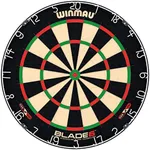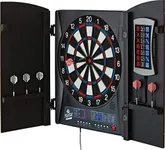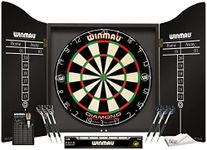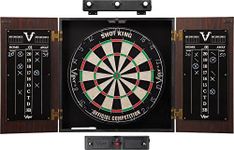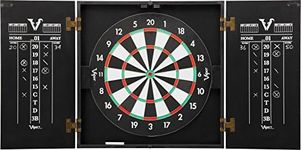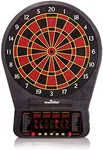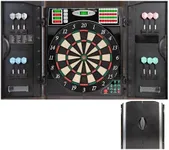Buying Guide for the Best Dart Boards
Choosing the right dart board can make a big difference in your playing experience, whether you're a beginner or a seasoned player. It's important to consider where you'll be using the dart board, who will be playing, and what kind of darts you want to use. By understanding the key features and how they relate to your needs, you can find a dart board that will be enjoyable, durable, and suitable for your space.Board TypeThe type of dart board refers to the material and construction, with the most common being bristle (sisal), electronic, and magnetic boards. Bristle boards are the standard for serious play and are made from tightly packed sisal fibers, which heal themselves after darts are removed. Electronic boards keep score automatically and use soft-tip darts, making them safer and great for casual or family play. Magnetic boards are best for young children as they use flat-tipped darts. To choose the right type, think about who will be playing and whether you want a traditional experience or something more family-friendly.
Size and DimensionsStandard dart boards have a diameter of 18 inches and a thickness of about 1.5 inches, which is the official size for tournaments. Smaller boards are available for casual play or limited spaces, while larger boards are rare and mostly for novelty. If you want to practice for competition or play with friends who are serious about darts, stick to the standard size. For kids or tight spaces, a smaller board might be more practical.
Wiring and SpiderThe wiring, or spider, is the metal framework that divides the scoring sections on a dart board. Thinner, rounded wires reduce bounce-outs and make scoring easier, while thicker or staple-heavy wires can cause darts to bounce off more often. If you want a more professional experience and fewer frustrations, look for a board with thin, staple-free wiring. For casual play, this may be less important.
Number RingThe number ring is the outer ring that displays the numbers for each scoring section. Some boards have a removable or rotatable number ring, which allows you to rotate the board and extend its life by spreading out wear. If you plan to use your dart board frequently, a rotatable number ring is a good feature to look for. For occasional use, a fixed ring is usually fine.
Mounting and InstallationHow the dart board is mounted can affect both safety and convenience. Some boards come with easy-to-use mounting kits, while others require more effort to install securely. Consider where you want to hang your dart board and whether you need a board that is easy to move or one that will stay in place permanently. If you’re setting up in a shared or temporary space, look for a board with simple mounting options.
Dart CompatibilityDifferent boards are designed for different types of darts. Bristle boards use steel-tip darts, while electronic and magnetic boards use soft-tip or magnetic darts. Make sure the board you choose matches the type of darts you want to use. If you already have a set of darts, check their compatibility before buying a board.
Durability and MaintenanceDurability refers to how well the dart board holds up over time, especially with frequent use. Bristle boards are known for their self-healing properties, while electronic boards may have plastic segments that can wear out. Maintenance includes rotating the board and cleaning it as needed. If you plan to play often, choose a board known for durability and easy maintenance.
